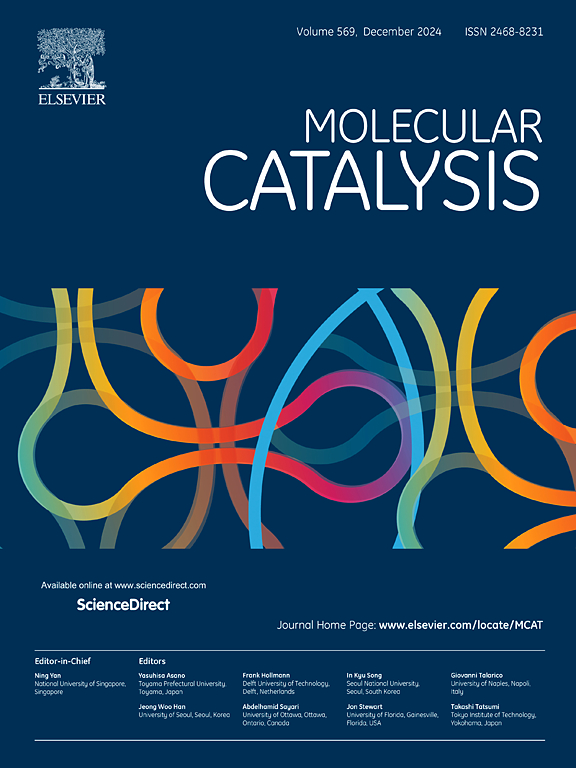Acidic photosensitizers promote the efficient photooxygenation of aromatic substrates catalyzed by anthraquinone-2-carboxylic acid through proton-coupled electron transfer and particle aggregation effect
IF 3.9
2区 化学
Q2 CHEMISTRY, PHYSICAL
引用次数: 0
Abstract
This article reports that acidic photosensitizers can significantly enhance the photooxidation of aromatic substrates catalyzed by anthraquinone-2-carboxylic acid (AQ-COOH) through proton-coupled electron transfer and particle aggregation effects, and PhSO3H exhibits the best improvement effect for the photooxidation of toluene. Under ambient conditions and visible light irradiation, 41.9 % toluene conversion and 49.0 % benzoic acid (BC) selectivity can be achieved. The introduction of benzenesulfonic acid (PhSO3H) can enhance the conversion of toluene to 70.1 % and significantly improve the BC selectivity, which likely originates from the particle aggregation and proton-coupled electron transfer (PCET) effect caused by the π-π interaction between AQ-COOH, PhSO3H and aromatic substrates. The PCET mechanism was successfully established by introducing PhSO3H into the AQ-COOH-based photooxidation system, resulting in efficient photooxidation of diverse aromatic substrates. The primary photo-generated active species involved in the photooxidation of toluene are superoxide free radicals (O2·−), photogenerated electrons (e−), oxygen vacancies (h+) and singlet oxygen (1O2), according to quenching experiments and EPR spectrum characterizations. The current photooxidation methodology exemplifies the O2-based selective oxidation of inert hydrocarbons under mild circumstances, aligning with the principles of green chemistry.

求助全文
约1分钟内获得全文
求助全文
来源期刊

Molecular Catalysis
Chemical Engineering-Process Chemistry and Technology
CiteScore
6.90
自引率
10.90%
发文量
700
审稿时长
40 days
期刊介绍:
Molecular Catalysis publishes full papers that are original, rigorous, and scholarly contributions examining the molecular and atomic aspects of catalytic activation and reaction mechanisms. The fields covered are:
Heterogeneous catalysis including immobilized molecular catalysts
Homogeneous catalysis including organocatalysis, organometallic catalysis and biocatalysis
Photo- and electrochemistry
Theoretical aspects of catalysis analyzed by computational methods
 求助内容:
求助内容: 应助结果提醒方式:
应助结果提醒方式:


